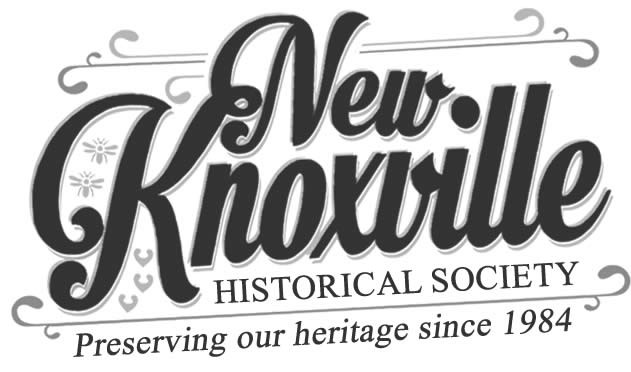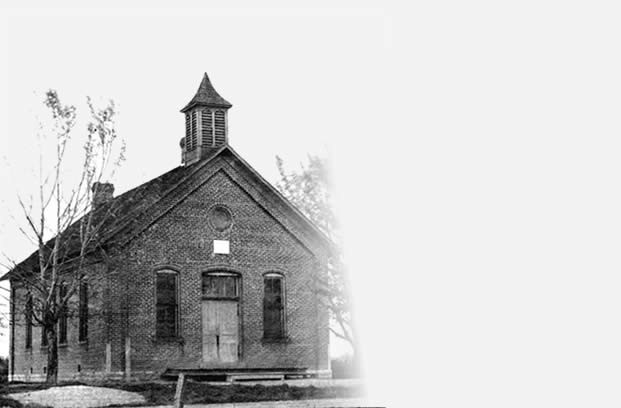TOLD AS PLANS ARE MADE FOR CENTENNIAL
The following article about the founding and naming of our community, written by Mr. George H. Kattman, was published in the Evening Leader on January 18, 1933, approximately three and a half years before the centennial celebration of the founding of New Knoxville in August of 1936. At the time of this writing it seems that very little was known about Mr. James Knox Lytle, the founder of New Knoxville. Apparently Mr. Kattman thoroughly researched the life of Mr. Lytle because in a later article published in 1935 he revealed a great deal about the genealogy of Mr. Lytle.
Editor’s Note: -- The following is the first of a series of articles concerning the early days of New Knoxville, which will celebrate its 100th anniversary in July, 1936. The articles are being written by George H. Kattman, New Knoxville correspondent to The Leader who is much interested in having the proper observance of the centennial anniversary. The articles on the early days of the New Knoxville community will appear from time to time in The Leader.
The settlement of New Knoxville dates back to about 1831. The Wapakoneta Indian Reservation took in much of Washington township and thus the settlement was retarded until after the departure of the Indians in 1832. Soon after however, there was an influx of German emigrants mingled with numerous others of English tongue, who settled in and about what now is the New Knoxville community, among them Shadrack Montgomery probably the most noted, who has the distinction of being the first settler in Washington township making a land entrant in 1831. In course of time of a few years pretty much all the most desirable land had been taken up.
Among these early settlers of the immediate community was one James K. Lytle. He owned and operated a sawmill and seems to have been the owner of quite an extent of territory. Tradition says he either lived on what is now the William Duhme residence or on what now is Out Lot No. 58. It seems that Mr. Lytle had much interest in perpetuating the settlement after he had purchased his mill from Cummins, Mather & Brown, who had established it, near the boundary of the now well known Fred and William Haberkamp farms a half mile north of the village. Cummins, Mather & Brown after selling the mill opened a store, probably just north of the original townsite, the exact location cannot be determined definitely. However Mr. Lytle came to the conclusion that his milling point and the opening of a trading center would serve as a nucleus for a town and accordingly during the summer of 1836, he caused the townsite to be platted, laid out in lots, streets, and alleys, a tract of land of approximately 40 acres, in the N. W. corner of Sec. 29 and the N. E. corner of Sec. 30, which is now our thriving village.
The dreams of Mr. Lytle, of the future of the town thus established fell far short of what the village is today. Tradition does not disclose nor are there any records available of other incidents of the life of Mr. Lytle, save that he is witness to a deed of conveyance of title of a 40 acre tract of land in the southeast corner of Sec. 19 by Mr. Edmund Lytle to Mr. Henry Venneman in September 1838. There is no knowledge as to whence he came and wither he went after bidding adieu to the town established and the community in which he is supposed to have lived at least for some years.
ORIGIN OF NAME
In the making of the conclusions of Mr. Lytle a reality it became apparent that the town to be established had to have a name. This seems to have baffled or agitated the early settlers quite much. Tradition has it that several names for the new town to be were proposed, among them LYTLEVILLE to commemorate the act and deed of Mr. Lytle. But it seems that Mr. Lytle chose not to perpetuate his name thus. A second name proposed was CRISTVILLE to call to memory the first mill established within the confines of the townsite and after which one of the streets of the town was named. STEAMVILLE was a third name proposed to preserve the remembrance to posterity the steam power operated sawmill, by which name the town was referred to in years later in memory of present living citizens. However no proof is available that a grist-mill nor a steam power operated sawmill existed at so early a date. It was apparently a quarter century later when according to the lore of the present oldest citizen, who lived his entire life in the community, (Mr. William Niemeyer) that the first grist-mill and steam propelled sawmill was established. A fourth name to be advanced seems to have been LADBERGEN to indicate the ancestry of the many German tongue settlers. It has been said that a German settler had informed his friends in Ladbergen, Germany that a new town was about to be established which probably would be named after their beloved Ladbergen, the home of their birth, whereupon the German friend replied that the name of “Ladbergen” would be an ill omen for the new town to established since Ladbergen, Germany was making no progress.
It is said that the early settlers had quite spirited debates as to the choice of the name to be applied to the town about to be established, each group of proponents clung tenaciously to their choice and that no agreement could be reached. Fortunately The proponents of LYTLEVILLE won the day when they suggested to name the town after Mrs. Lytle, in honor of her maiden name which is said to have been “KNOX”, when happily all united and thus the new town was called KNOXVILLE.
There are no proofs to substantiate these legendary like narratives. It is not known whence Mr. Lytle came, whether he was married, and if so, whether he ever lived here, or whether he was only a land entrant, and whither he went, as stated above. All this bit of much desirable ancestral history seems to lie buried in the long ago. Be that as it may, later when the early citizens prepared a petition applying for a United States Post Office, Mr. H. W. Snethkamp, then a young man, who had spent several terms at Heidelberg College, Tiffin – preparing himself for the ministry, but which he later abandoned for the profession of teacher, informed the “Fathers” of that time that there is another town by the name of “KNOXVILLE” in the state of Ohio and that the U. S. Government surely would deny their petition. But the “Fathers” would not listen and ridiculed his suggestions. However in due time information was received vindicating Mr. Snethkamp. (This Knoxville is located in Jefferson county in the extreme eastern part of the state). However our early “Town Makers” were not dismayed and persisting to commemorate the legendary mother of the town by means of her maiden name “KNOX” prepared a new petition and application and in it prefixed “NEW” to the original name Knoxville. This was in 1858 since which time it has been NEW KNOXVILLE.
NOTE: The William Duhme residence mentioned in this article is the large brick house located at what is now 108 North East Street.


